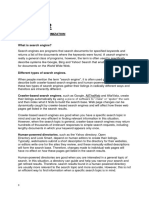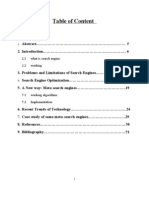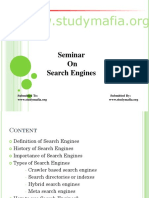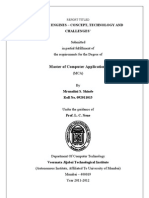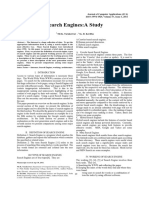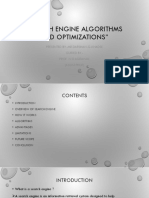0% found this document useful (0 votes)
8 views5 pagesIntroduction To Search Engines Assignment
The document provides an overview of search engines, detailing their history, purpose, and functionality. It explains how search engines work through crawling, indexing, and ranking, and discusses various types and examples of search engines. Additionally, it covers search engine algorithms, the importance of SEO, and future trends in search technology.
Uploaded by
Ameedutt AgarwalCopyright
© © All Rights Reserved
We take content rights seriously. If you suspect this is your content, claim it here.
Available Formats
Download as PDF, TXT or read online on Scribd
0% found this document useful (0 votes)
8 views5 pagesIntroduction To Search Engines Assignment
The document provides an overview of search engines, detailing their history, purpose, and functionality. It explains how search engines work through crawling, indexing, and ranking, and discusses various types and examples of search engines. Additionally, it covers search engine algorithms, the importance of SEO, and future trends in search technology.
Uploaded by
Ameedutt AgarwalCopyright
© © All Rights Reserved
We take content rights seriously. If you suspect this is your content, claim it here.
Available Formats
Download as PDF, TXT or read online on Scribd
/ 5













